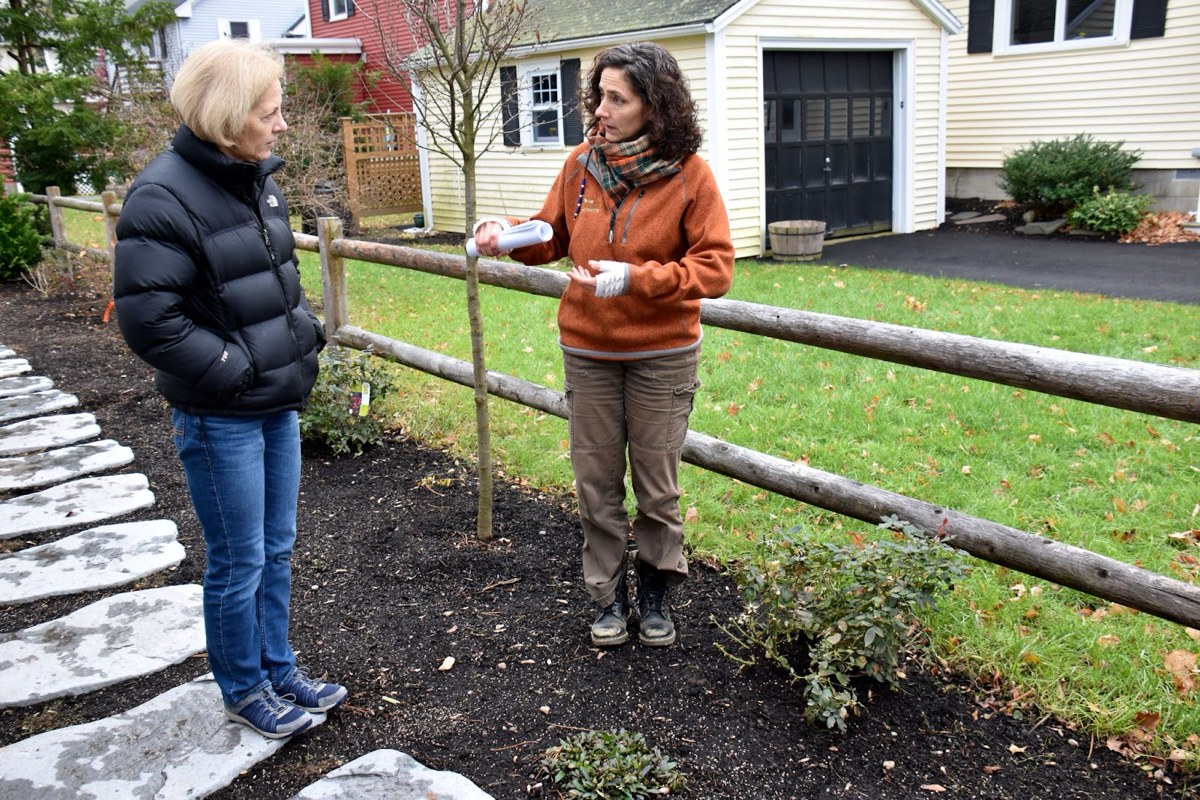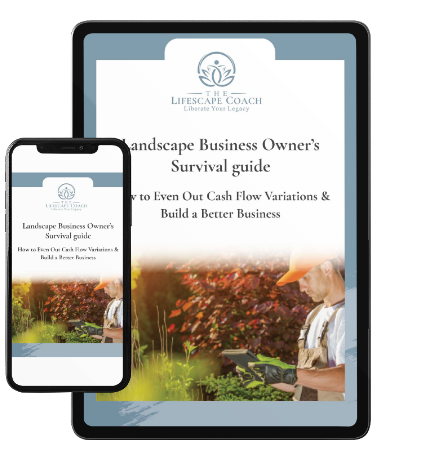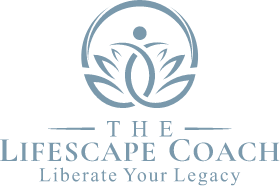Boost Your Landscape Sales Skills with These Expert Tips
Creating an effective sales strategy is one of the most impactful areas we coach clients. Because of the discomfort many landscape business owners have with selling their services, their sales pitches are often rushed, tone-deaf, or poorly thought out. If you are stressed by the thought of a sales meeting filled with pushback, reduce those feelings of discomfort by building the following elements into your sales process.
Show Up Generous
Your clients and prospects seek an expert to help solve their landscape problems and take advantage of opportunities. But they’re certainly not interested in arrogance and hubris accompanying that expertise. They will automatically respond if you can show up with a generous heart. If you ever feel a potential client is taking advantage of you, you can dial back that generosity. However, leading with openness and a true desire to achieve a solution for the client is never the wrong move.

Start with big-picture conversations that can help frame the solutions.
Be Clear About What You Can Sell
We have observed that the sales process will go awry when the seller goes into a meeting lacking clarity about what they can actually do for a client. When that lack of clarity is combined with a desperate wish to close the sale, sellers can quickly find themselves agreeing to services that are out of alignment with their current service model, making them difficult to deliver.
To avoid this, ask yourself: What makes you unique? What are the most straightforward services for your company to turn around? What is the core constellation of services that you have cultivated within your company - meaning you have the necessary knowledge base among your staff, the required equipment, and knowledge of the process - so you can confidently deliver that service?
Ultimately, at least eighty percent of any job should consist of these services. The other twenty percent can certainly represent a “stretch” for your business; this is how we learn and grow. Maybe that twenty percent is represented through working with a new subcontractor partnership or pulling a permit you’ve never obtained before. Anything more than that, however, and you will find yourself introducing stall points and decreasing your confidence level, both of which create friction in closing the deal and making good on promises.
Be Clear About Who You Can Sell To
As discussed in previous blog posts, every landscape business needs to identify its ideal client profile and honor it when closing new sales. Sometimes, this is as simple as identifying the geographic radius that your business serves. If an “ideal client” is located outside of this radius, providing services creates an implementation burden, and it may be ill-advised to take them on.
In other scenarios, there may be a misalignment between your mindset and the prospect's. If, for example, sustainable, organic practices are central to your mission and your current lead is not at all interested in that, friction is automatically created in the selling process.
Qualify your sales leads and examine whether there is mindset alignment as well as a service alignment before you make a pitch. Not only will this save you time, but it makes closing the sale much more straightforward.

Get into the details of the areas your prospect is most interested in solving.
Listen Intently To What The Client Is Saying
When you’re an expert, it’s easy to unintentionally intimidate clients who are not well-versed in your field. We all want to demonstrate that we are highly accomplished and masters of our trade, but it’s important not to overwhelm a prospective client with a lot of technical jargon or by talking them through your ideas too quickly. Remember, what feels like common sense to you may be something they are hearing for the first time.
Prospective clients are speaking with you because they want to solve a problem or take advantage of an opportunity. It is your job to identify and refine their wishes very carefully. An important strategy is parroting back what you are hearing so the client feels reassured that you understand them and their needs.
Listening becomes more complicated when there are more than two of you in the conversation. If you’re meeting with two or more individuals at a client site, you may need to do some triangulation of what you hear. (Example: “I heard you say X, and I heard you say Y. I'm imagining the intersection is Z. Am I right about that?”)
Likewise, if you attend a meeting with a colleague or partner, even one whom you know and work well with, be sure the two of you are listening carefully to what each other is proposing. It is okay to respectfully offer opposing opinions, presuming that you and your colleague have already worked that out beforehand. A failure to present a united front will only confuse the prospective client.
Avoid Going Too Big Too Fast
Once you’ve qualified your lead, listened carefully to the problem, and know you can offer a solution, it’s easy to become wrapped up in a grandiose vision of what you want to propose to the client. You must resist this urge.
First and foremost, your job is to understand the problem or opportunity directly in front of you and speak to that clearly. Start by offering the most accessible sale. Present the most straightforward fixes first. This will alleviate the prospective client’s anxiety and make them think their problem is solvable. If, instead, you begin by laying out grand designs and sharing many details about previous work you’ve done, the prospect’s mind will become preoccupied with fear over pricing, and you may lose your sale.

Share the potential you see for an amazing outcome once you solve the problem for them.
Prepare to Introduce Alternative Options and/or Phased Approaches
Asking questions to get feedback along the way is an amazing way to engage the client in coming up with their own solution. As you do this, be aware of their facial expressions and body language. Pay attention to where you sense resistance and where you sense excitement. Over time, you will learn how to gear your conversation toward minimizing the former and maximizing the latter.
Once you’ve laid the groundwork for a straightforward, simple solution and have gauged the prospective client’s response, you can present one or two alternative approaches. (One alternative is often enough unless the second is also very strong.)
Seasoned contractors or designers might also offer a phased approach at this point for a large job that the client might feel more comfortable breaking up. We generally do not recommend breaking up a project into more than two or three phases.
End with the “Wow”
By this stage of the conversation, you’ll know whether you’ve built enough trust with the prospective client to discuss bringing your proposed project to the next level. Obviously, if you are sensing resistance, you should skip this step. Otherwise, you can suggest a few additional things to enliven the space and add some pizzazz to the project.
Everything you suggest at this stage should connect to the points during the conversation at which you observed the most excitement from the prospective client. If they’ve expressed hesitation about using a lot of water, it will not make sense to pitch them on a water feature. But if they’ve shared a love of wildlife, this is the time to mention creating a habitat.
Tread very gently during this stage; share your ideas and the added benefits of including them, and take them further only when you’ve seen strong interest from the prospective client.
Ask For the Sale
To successfully make a sale, it’s crucial to have a rough idea of the sale you’re trying to make before you arrive at the consultation. Is this an annual landscape maintenance contract? If so, what are the elements that you need? Consider how you get there if you are trying to close a design sale.
This may mean having some pre-written materials about your services, programs, and pricing that will help you talk through the next steps. Module 3 of our Landscapers Freedom Formula course provides more specifics on this process.
There is an old adage that people love to buy, but hate to be sold. This has never been truer than in the current moment. Post-pandemic, your prospective clients are experiencing buyer fatigue and wariness about increased prices. This presents an obstacle, to be sure, but it is not insurmountable.
Maintain a focus on identifying the most practical solution for the client and selling that before presenting the extras. Be very clear about the services that are ideal for you to offer and the clients who are most suitable for you to be offering them to. In this way, you can build your own excitement for the sales process and increase your success rate.
Did you find this article enlightening? Are you looking to elevate your landscape business to new heights? If you're curious about the potential benefits of coaching for your landscape business, we invite you to download the eBook "25 Signs Your Landscape Business Needs Developmental Coaching" to find out more.
Landscape Business Owners Survival Guide



